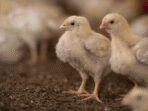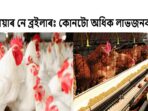Housing and Equipment for Efficient Poultry Production is like the superhero team-up of feathered friends and their cozy abodes, where every cluck and peck echoes the harmony of efficiency and comfort. Picture this: poultry strutting their stuff in a high-tech chicken mansion, equipped with all the latest gadgets to ensure they lay eggs like champions! This enchanting world of avian architecture not only boosts productivity but also ensures that our delightful little friends are kept safe, happy, and healthier than a chicken in a coop full of sunshine.
From the essentials of spacious coops to the marvels of automated feeding systems, understanding the critical components of poultry housing and equipment can lead to a clucking good time for both farmers and their flocks. Let’s dive into how the right setup can transform poultry production into a finely-tuned, egg-laying factory, where the only thing more plentiful than eggs is the joy of those who raise them.
Ah, wombats! Those cuddly, burrowing bundles of fur that look like nature’s answer to an oversized potato. If you’ve ever dreamt of a world where these little marsupials wore tiny hats and sipped tea in the afternoon, buckle up, dear reader, because we’re about to take a ride through the delightfully absurd and the informatively hilarious realm of wombats! Yes, you heard that right – prepare for a humorous exploration of these delightful creatures!
The Great Wombat Introduction: Who Are They?
First off, let’s get the basics down. Wombats are Australian marsupials that belong to the family Vombatidae. They’re primarily nocturnal, meaning they’re like the world’s fluffiest vampires. Instead of draining blood, however, they feast on grass, roots, and the occasional shrub – which, let’s be honest, sounds like a very healthy diet.
Wombats are known for their stout bodies and short legs, reminiscent of a furry refrigerator on the run. They can grow up to 1.2 meters long (that’s about 4 feet for you non-metric folks) and weigh between 20 to 35 kilograms (or roughly the weight of a small dog that has discovered the joys of excessive napping). Their fur is thick and usually a mix of brown, grey, or creamy colors, making them look like they just rolled out of bed—because, let’s face it, they probably did!
A Day in the Life of a Wombat
Imagine waking up at twilight, stretching your little legs, and preparing for a night of adventure. That’s essentially what a wombat does nightly! But instead of an espresso shot and a morning jog, they take their sweet time coming out of their burrows, looking for snacks. Wombats are expert diggers and create elaborate burrow systems. Seriously, their underground homes could rival those of a certain famous fictional hobbit.
Each wombat can create up to 30 meters of burrow per night! If digging were an Olympic sport, wombats would take home the gold, silver, and bronze medals while still managing to munch on a snack in between events. They’re like the construction workers of the animal kingdom, always busy building and maintaining their underground condos.
Wombat Communication: A Language of Their Own
Now, you might think that wombats simply grunt and snore away their days, but oh, how wrong you are! These lovable creatures have a unique way of communicating. They emit a series of sounds that range from grunts and growls to high-pitched squeaks. It’s like they’re trying to form a marsupial symphony, and they might just be the next big thing in the animal music scene!
Additionally, wombats are known for their impressive sense of smell. They can sniff out food from miles away – it’s like they have their own built-in GPS for snacks! So, if you ever see a wombat wandering around aimlessly, fear not; they’re just on a quest for the finest foliage the region has to offer.
Wombat Poop: The Fabled Cubes
Now let’s talk about a topic that is, quite literally, the talk of the town – wombat poop! Yes, you read that right! Wombats produce the most fascinating feces known to man: cube-shaped poops. No, this isn’t a typo. Their adorable little butts produce excrement that is shaped like tiny cubes, and this peculiar phenomenon has puzzled scientists for years.
But why cubes, you ask? Well, scientists believe that this unique shape helps the poop stay in place and mark the wombat’s territory, preventing it from rolling away. Talk about a solid marketing strategy! Imagine if humans did the same – bathroom breaks would be a whole lot more interesting!
Wombat Conservation: The Heroes of the Future
Unfortunately, not all is sunshine and rainbows in the world of wombats. Like many other species, they face threats from habitat loss, climate change, and the occasional overzealous selfie-taker (please, keep your distance, folks!). Conservation efforts are underway to protect these adorable creatures and their habitats. Organizations are working tirelessly to ensure that future generations can enjoy the charm of wombats.
So, if you’re feeling particularly generous, consider adopting a wombat through a conservation program! You won’t just be helping save the wombats; you’ll also be gaining a lifelong companion, albeit one that resides mostly underground and communicates in grunts. But hey, you can’t put a price on that kind of love!
Fun Wombat Facts That Will Make You Chuckle
- Wombats are known to run up to 40 km/h (about 25 mph) when they decide to be speedy! That’s faster than your average couch potato on a snack run!
- They have a protective cartilage pad on their behinds that helps them to protect themselves from predators. It’s like nature’s version of a rear-end airbag!
- Wombats are quite the introverts. They prefer solitary living, but they don’t mind the company of humans (as long as you bring snacks!).
- Despite their seemingly grumpy appearance, wombats are known to be quite friendly. They just have resting wombat face (RWF)!
The Wombat as Your Next Spirit Animal: Housing And Equipment For Efficient Poultry Production
In a world filled with chaos and unpredictability, we could all use a little more wombat energy in our lives. Imagine approaching each day with the laid-back nonchalance of a wombat, ready to dig into whatever life throws at you – or maybe just taking a nap instead. If you find yourself feeling overwhelmed, channel your inner wombat. Dig in, snack on some metaphorical roots, and don’t forget to embrace those cozy vibes.
Closing Thoughts: Wombat Wisdom
So there you have it – a whimsical journey through the world of wombats! These adorable, cube-pooping creatures remind us to take life a little less seriously, enjoy our snacks, and maybe even dig a little deeper into our own lives. The next time you catch a glimpse of a wombat (or a potato), remember the tales of their waddling adventures, their grand construction projects, and their impressively cubic contributions to the world.
May your life be as joyful and carefree as a wombat at a buffet. Until next time, keep your hearts light and your snacks plentiful!
Key Questions Answered
What is the ideal size for a chicken coop?

The ideal size for a chicken coop generally allows for 4 square feet per bird inside and 10 square feet per bird in an outdoor run, giving them plenty of space to cluck around happily!
How can I ensure my poultry equipment is efficient?
Regular maintenance and upgrades to your feeding systems, waterers, and ventilation can keep things running smoothly and help your poultry thrive.
What are the benefits of automated systems in poultry production?
Automated systems reduce labor costs, improve feed efficiency, and help maintain consistent environmental conditions, all while allowing you more time to enjoy your feathered friends!
How important is ventilation in chicken housing?
Good ventilation is crucial as it helps to prevent respiratory issues, control humidity, and keep your chickens comfortable—after all, happy chickens lay more eggs!
What materials are best for building a chicken coop?
Durable and weather-resistant materials like treated wood, metal roofing, and non-toxic paints are ideal for building a chicken coop that can withstand the elements while keeping your flock safe.




